Sustainability has become an increasingly important consideration for both wine producers and consumers in recent years. As climate change threatens vineyards and public awareness grows regarding the environmental impact of agriculture, the wine industry is embracing more eco-friendly practices.
Consumer demand is also driving this trend. Surveys show a growing percentage of wine drinkers, especially younger generations, factor sustainability into their purchasing decisions and are willing to pay more for wines made using ethical and eco-conscious methods. The global market for organic wine alone is forecasted to grow at an 8.7% CAGR through 2027.
This article will explore the most important sustainable wine practices being implemented in 2024 and beyond. Key topics will include various eco-certifications like organics, biodynamics, and sustainability programmes; sustainable packaging innovations; renewable energy and regenerative agriculture techniques for carbon neutrality; and ethical, socially responsible business practices. The latest consumer research, trends, and forecasts will be interwoven to provide context for the rapidly growing market for green wines.
The objective is to give wine businesses and consumers an up-to-date understanding of what sustainability means in the modern wine world and how leading producers are driving eco-innovation. This comprehensive guide will empower wine lovers to make informed choices to support wineries that align with their environmental and social values. The collective impact of such mindful purchasing decisions can accelerate the wine industry's crucially needed transition to sustainable production.
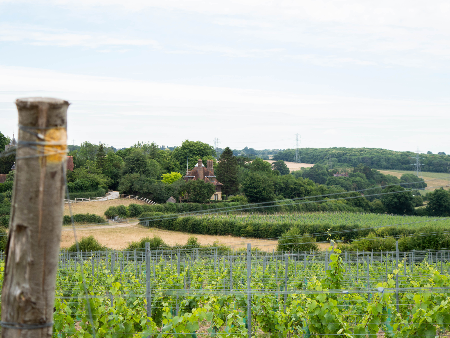
Organic & Biodynamic Wine Certifications
Organic and biodynamic certifications are two of the most meaningful eco-labels in wine. They signify viticulture and winemaking practices that regenerate soil health, support biodiversity, and produce authentic wines without synthetic additives.
Overview of Organic Wine
Organic wine comes from organically grown grapes and contains no added sulphites or other synthetic processing aids except for naturally occurring sulphites from fermentation. The USDA, European Union, and other agencies certify wines as organic if they comply with standards forbidding the use of artificial fertilisers, pesticides, herbicides, or fungicides in the vineyard.
Instead, organic vintners build soil health through composting, cover cropping, and biodiversity cultivation. They manage pests naturally through beneficial insects, raptor boxes, and plant extracts. Organic regulations also govern winemaking. Yeast, enzymes, and other additives must be certified organic. Water and energy conservation are encouraged.
Globally, organic vineyards are expanding at 9% annually as producers respond to climate threats and consumer demand. Surveys show 73% of U.S. millennials regularly purchase organic wines. The organic seal gives buyers assurance that the wine's origin and methods align with ethical values. Certification requires third-party auditing and re-approval each year.
Overview of Biodynamic Wine
Biodynamic farming extends organic practices to integrate the vineyard ecosystem with animals, plants, soil, people and cosmic rhythms. Guiding principles were conceived by Rudolf Steiner in 1924 based on ancient wisdom and holistic science.
Biodynamic techniques include homeopathic plant preparations applied in minute doses to stimulate root growth and disease resistance. Compost containing fermented manure and medicinal herbs called "preparations" is also spread to enhance microbial life. Planting, harvesting, and winemaking integrate lunar and seasonal cycles. The goal is healthy, self-sustaining farms expressing unique terroirs.
Demeter and Biodyvin certify biodynamics. Standards exceed organics in fostering biodiversity and natural self-regulation. Certified wines display unique texture and aromatic complexity due to meticulous viticulture and gentle, additive-free winemaking.
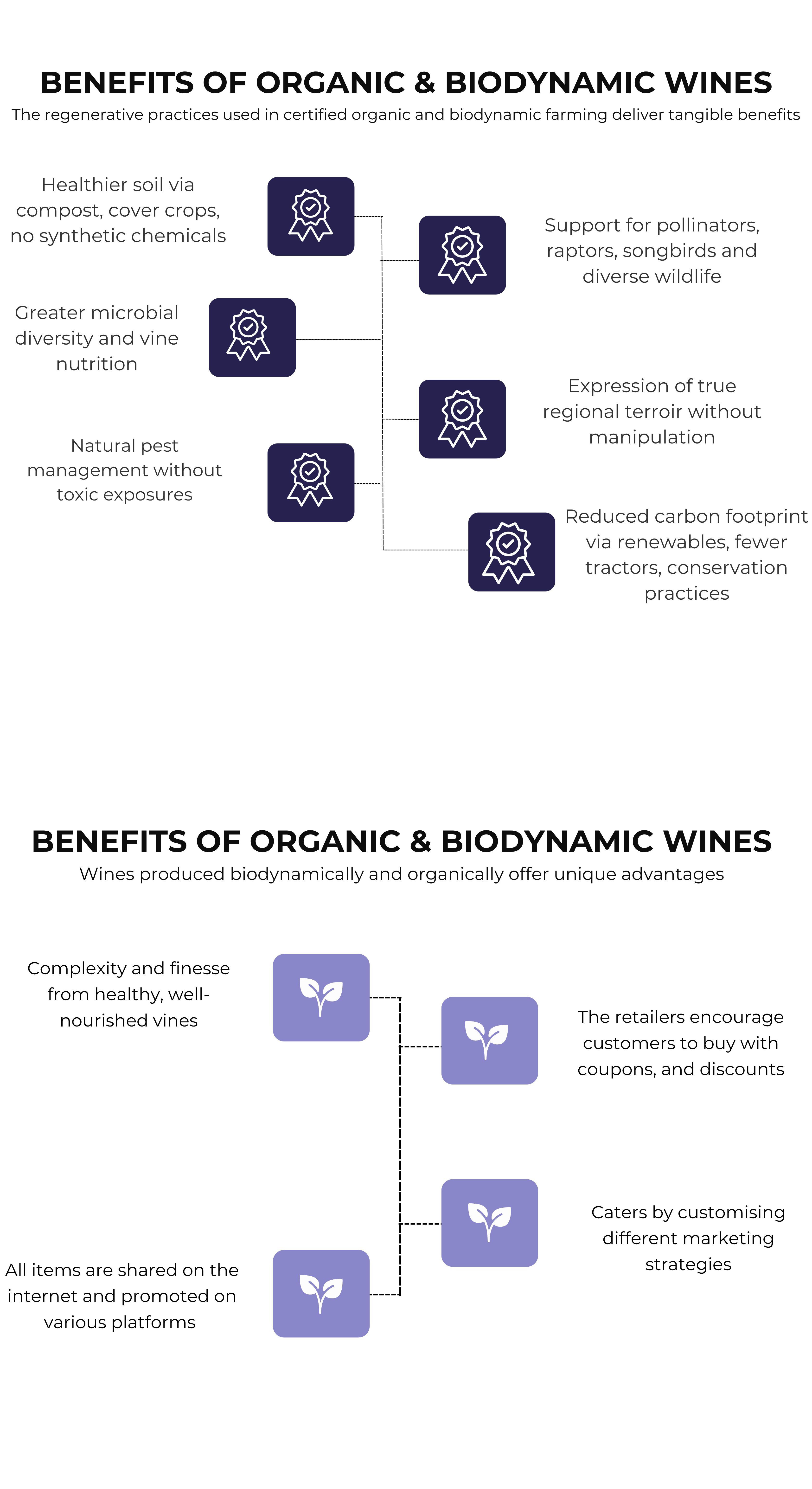
Leading Organic & Biodynamic Wineries
Pioneering estates around the world have obtained organic and biodynamic certifications, signalling their commitment to sustainable practices. Their success dispels myths and raises awareness about the viability of chemical-free farming. Here are some of the most influential:
Bonterra (Mendocino, California) - Certified Biodynamic and organic. Farming 500 acres biodynamically. National distribution.
Frey Vineyards (Mendocino, California) - Certified Biodynamic and organic. One of the nation's first organic wineries. Produces affordable wines.
Chapoutier (Rhone Valley, France) - Biodynamic since 1992. World's largest Biodynamic estate with over 250 acres certified.
Albet i Noya (Penedes, Spain) - Certified organic and Biodynamic. Leader in Spain for these practices since 1979. Age-worthy wines.
Cullen Wines (Margaret River, Australia) - 500 acres certified Biodynamic/organic. Founding member of the Australian Biodynamic Wine Association.
So whether you're a consumer seeking lower pesticide wines aligned with your values or a producer weighing certification, the eco-labels of organic and Biodynamic wines deliver measurable benefits for health and sustainability. Dispelling lingering myths, these conscientious estates make wines of purity and finesse while regenerating soils and ecosystems for future generations. Their success stories lead the way for wider adoption of earth-friendly practices across the entire wine industry.
Sourcing Organic/Biodynamic Grapes & Ingredients
The journey towards sustainable wine begins in the vineyard, where conscientious grape sourcing and farming practices set the stage for earth-friendly production. As eco-certified wines gain mainstream popularity, wineries are increasingly scrutinising their agricultural suppliers and validating responsible, regenerative methods.
Why Sustainable Grape Sourcing Matters
The winemaking process transforms grapes and other agricultural ingredients into refined, value-added products. Consequently, the environmental impacts of ingredient farming heavily influence a wine's overall sustainability profile. Conventional vineyards often apply significant synthetic chemicals and draw heavily on fossil-fuelled machinery for cultivation and harvesting. As climate change threatens grape yields worldwide, these energy-intensive practices also reduce soils' natural resilience and carbon sequestration capabilities.
In contrast, organic and biodynamic farming practices regenerate soil health, support biodiversity and reduce carbon emissions. So, sourcing grapes and other ingredients from certified eco-farms enables wineries to extend sustainability benefits back to the agricultural origins of their products. In turn, consumers gain assurance that wines align with green values from vine to bottle.
As the market for sustainable wines expands rapidly, wineries also reap financial advantages from organic/biodynamic ingredient sourcing. Surveys reveal widespread willingness to pay premiums for chemical-free, eco-friendly wines. By securing certified sustainable supplies, wineries capture this demand and justify higher prices to recoup farming's added costs.
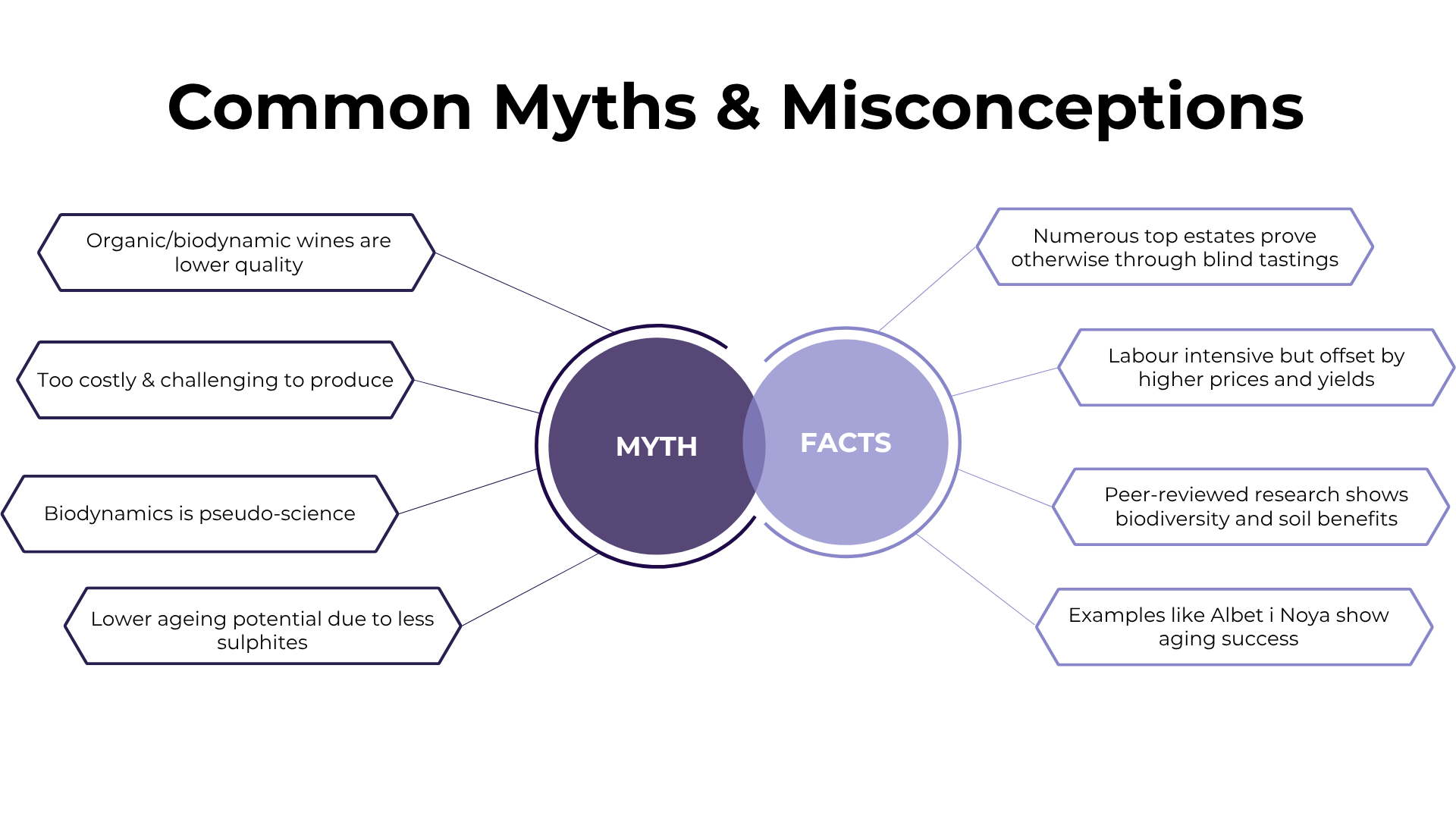
Sourcing Impacts Wine Sustainability
Ingredient sourcing and farming methods also broadly shape wines' overall sustainability profiles, including:
Carbon emissions: Organic/biodynamic farming sequesters more soil carbon and uses fewer tractor passes, slashing CO2 emissions versus conventional vineyards by up to 60%, per research.
Water conservation: Natural pest/disease resistance of organic/biodynamic vines reduces irrigation requirements by over 25% compared to conventionally farmed sites.
Circularity: Biodynamic preparations, composting and cover cropping recycle nutrients on-site to minimise external inputs.
Waste reduction: Lower pesticide/fertiliser applications, cut packaging and hazards.
Thus, sourcing practices significantly impact sustainability attributes that today's eco-conscious wine consumers increasingly demand. By validating and optimising agricultural supply chains, wineries also gain flexibility to highlight sustainability strengths through eco-certifications, carbon neutrality claims, and rigorous life cycle assessments.
Sustainable Wine Certifications
Sustainable wine certifications have proliferated over the past decade as more wineries seek to validate their environmental, social, and ethical practices. Unlike broader "green" claims, third-party audited certifications offer credibility by evaluating wineries and vineyards against rigorous sustainability standards.
Major sustainable wine programmes certify either vineyards, wineries, or wines themselves to be sustainably produced. Certification typically requires implementing practices around:
- Water and energy conservation
- Waste reduction and recycling
- Reduced chemical use
- Habitat and soil protection
- Social responsibility and community engagement
According to research, over 10% of vineyard acreage in California is now certified sustainable. As consumer demand rises for eco-conscious wines, sustainable certifications help guide purchases.
Key Sustainable Wine Certifications
Certified California Sustainable Winegrowing (CCSW) is the leading sustainability programme in California. Managed by the [California Sustainable Winegrowing Alliance] (CSWA), over 3,200 vineyards and wineries are CCSW certified across the state.
The CCSW programme is based on the California Code of Sustainable Winegrowing workbook's 227 best practices. Certified wineries and vineyards undergo annual self-assessments and third-party audits on criteria ranging from water use efficiency to environmentally preferred purchasing to fair labour practices.
Sustainability in Practice (SIP) has certified over 300 vineyards since 2008, primarily in California. SIP's standards exceed 200 sustainable best practices across vineyard operations, winemaking, and community engagement. An independent certification committee reviews audits to award certification.
Napa Green offers comprehensive sustainability certification for Napa Valley wineries and vineyards. Its standards prioritise soil health, water conservation, renewable energy, waste diversion, and carbon reduction. Napa Green also sets strict prohibited chemical lists and was the first programme to integrate equity criteria. Over 90 Napa wineries are certified.
LIVE (Low Input Viticulture and Enology) and Salmon Safe certify sustainable vineyards in the Pacific Northwest. Standards help vineyards reduce chemical use, improve water quality, and restore wildlife habitat. LIVE has certified over 300 vineyards to date, while Salmon Safe has more than 350 certified vineyards.
Additional Eco-Labels like Demeter Biodynamic, Food Alliance, LODI Rules, and vineyard carbon-neutral programmes can complement sustainable certifications. Some countries, like New Zealand, Chile and South Africa have national sustainability programmes as well.
Assessing Sustainable Wine Certifications
With numerous sustainability options, consumers and wineries should evaluate programmes based on:
Third-Party Auditing – Regular auditing by an independent party, versus self-reported claims, ensures standards are rigorously applied.
Transparency – Certifications should publicly share standards, outcomes, and progress to enable accountability.
Continuous Improvement – Programmes must periodically strengthen standards and foster innovation as best practices evolve.
Site Specificity – The most robust certifications set customised targets and practices tailored to local growing conditions.
Issue Breadth – Comprehensive standards should span environmental, social, ethical, and quality dimensions. Programmes narrowly focused on single attributes provide less assurance.
Reputable, audited and evolving sustainability certifications offer buyers trustworthy assurance that wines adhere to responsible production practices from soil to bottle. As certified sustainable wines achieve price premiums and growing sales, these eco-labels incentivise wider adoption of regenerative techniques across the entire wine industry.
Eco-Friendly Packaging & Shipping
Wine packaging and shipping account for a significant portion of the wine industry's carbon footprint. Studies show that packaging alone contributes 23-29% of a winery's total emissions. With rising eco-consciousness among consumers and increasing climate regulations, wineries must rethink traditional packaging and implement smarter distribution models to slash emissions.
Lower Impact Packaging Materials
Glass bottles have dominated wine packaging for centuries thanks to their impermeable and chemically inert properties that preserve wine quality. However, manufacturing glass emits up to 1.25kg of CO2 per 750ml bottle. Transporting heavy glass bottles also burns fossil fuels.
In response, forward-thinking wineries now offer wines in lighter glass bottles, weighing as little as 350g rather than the standard 500-700g. Brands like Chapoutier and Bonterra are pioneering ultra-thin 300-320g bottles that retain integrity while cutting emissions over 20%.
Beyond lightweight glass, wineries utilise alternative packaging formats with lower carbon footprints, such as:
Aluminum Cans: Infinitely recyclable and far lighter than glass, emitting 80% less CO2 during transport. Popular for outdoor occasions.
Tetra Paks: Made from 70% paper and fully recyclable, these shelf-stable cartons slash transport emissions by 50% versus glass.6
Bag-in-Box: The most eco-friendly option, with 80% savings in packaging weight and just 0.2kg CO2 per 3L. Preserves wine for weeks after opening.
Consumer perceptions that alternative packaging denotes lower quality persist. But well-designed containers from eco-conscious brands like Arvine in cans or Bandit boxed wines attract climate-aware drinkers.
Sustainable Shipping & Distribution
In addition to packaging, wineries must implement smart distribution strategies to minimise transport footprints. Among best practices are:
Local & Regional Distribution
Prioritising local sales channels and partnerships with nearby retailers, restaurants, and event venues to reduce overland mileage.
For national distribution, consolidating inventory in centralised regional hubs to cut long-haul freight trips.
Route Optimisation
Choosing direct delivery routes that minimise fuel consumption and costs.
Using eco-friendly vehicles like electric or natural gas-powered trucks.
Emissions Reporting
Tracking carbon emissions from product distribution through lifecycle assessments.
Offsetting unavoidable transport emissions via verified carbon credit purchases.
Sustainable Logistics Partners
Verifying 3PL, warehousing and shipping partners implement ethical, eco-friendly practices.
Prioritising SmartWay certified sustainable carriers.
As wineries streamline their supply chains, sustainable packaging and distribution solutions significantly shrink carbon footprints. For example, Washington's Ste. Michelle Wine Estates cut product transport emissions intensity by over 11% in just two years through lightweight glass, logistics upgrades, and renewable energy purchases.
Consumer Messaging
Communicating eco-friendly packaging and distribution initiatives boosts consumer appeal and loyalty among environmentally-minded wine buyers. Telling your sustainability story builds trust and emotional connections with patrons who want their dollars to support positive change.
Effective tactics include:
- Detailing green packaging formats, weight reductions, and recyclability.
- Explaining distribution emissions and cutting efforts like regionalisation.
- Sharing progress and goals around lowering carbon footprints.
- Educating consumers on how to properly recycle wine packaging.
- Prominently displaying eco-certifications like Climate Neutral or Sustainable Winegrowing on labels and shelves.
- Quantifying positive impacts from sustainability programmes through infographics or metrics.
By showcasing their commitment to sustainable packaging and distribution, wineries meet consumer demand for eco-friendly products while accelerating the industry’s urgently needed carbon reductions.
Carbon Neutral & Regenerative Practices
As climate change continues to threaten agricultural systems worldwide, the concept of carbon neutrality has gained significant traction across industries. For the wine sector, achieving carbon neutral status entails measuring and reducing greenhouse gas (GHG) emissions across the entire production process - from viticulture to bottling and transportation.
What Does "Carbon Neutral" Mean?
A carbon neutral winery has achieved net zero carbon emissions by minimising and offsetting all GHG emissions associated with its operations. This is accomplished through a combination of emission reduction strategies and purchasing carbon offsets. Steps towards carbon neutrality generally include:
Measuring the winery's carbon footprint through a lifecycle emissions assessment
Reducing emissions by improving energy efficiency, switching to renewable energy, upgrading equipment, modifying farming techniques, etc.
Offsetting remaining unavoidable emissions by investing in certified carbon reduction projects (e.g. reforestation)
By quantifying total emissions and actively working to mitigate them, carbon neutral facilities counterbalance their climate impact.
Independent verification by accredited third parties provides credibility and ensures environmental claims are valid. Currently, over 300 wineries worldwide have attained carbon neutral status.
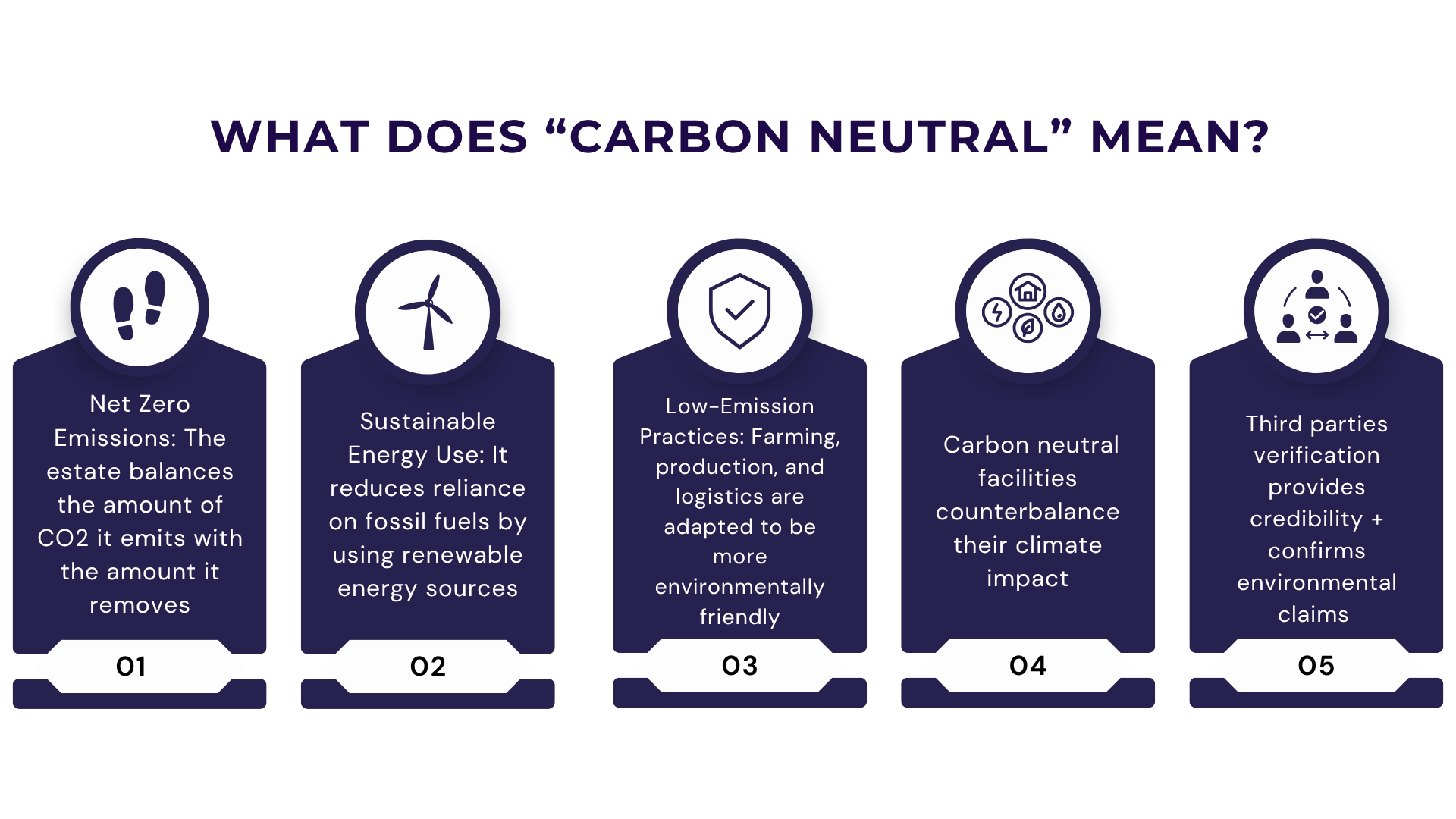
The Role of Offsets and Carbon Sequestration
For hard-to-eliminate emissions, carbon offsets enable businesses to indirectly neutralise their climate footprint. Offset providers fund activities like reforestation or renewable energy installations, quantitatively counteracting emissions elsewhere.
Carbon sequestration via nature-based solutions is another mechanism for reaching net zero. Viticultural practices that boost soil organic carbon - such as cover cropping, compost amendments, and retaining biomass - can effectively store atmospheric CO2 while enhancing vineyard health.
On-site carbon capture opportunities may also qualify as offsets, depending on certification protocols. This is an emerging area of innovation.
Regenerative Agriculture
An evolution of sustainable farming, regenerative agriculture takes a whole-systems approach towards healing landscapes. It comprises a suite of techniques that rebuild soil fertility, enhance biodiversity, improve watershed function, and strengthen ecosystem resilience.
In vineyards, key practices include:
- Cover cropping with diverse vegetation
- Composting and applying organic soil amendments
- Reducing tillage and soil disturbance
- Integrating animals for holistic grazing
- Retaining wild, uncultivated spaces
These methods boost soil carbon sequestration while radically decreasing inputs and yield impacts compared to conventional viticulture.
Regenerative principles have guided certain biodynamic and organic producers for decades. However, adoption across the mainstream wine industry is still nascent.
Carbon Neutral & Regenerative Wineries
Progressive producers around the world are leading the way in sustainable viticulture and carbon positive operations:
- Emiliana Organic Vineyards (Chile): Largest organic winemaker in the world; carbon neutral certified since 2009
- Champagne Louis Roederer (France): Pursuing regenerative agriculture with cover cropping, composting, and reduced pesticide use
- Tablas Creek Vineyard (California): First Regenerative Organic Certified winery in the US, emphasising soil health and biodiversity
As climate consciousness grows among consumers, especially younger generations, the demand for credibly sustainable and eco-friendly wines will continue expanding. Achieving carbon neutrality and investing in regenerative practices will soon be baseline expectations for forward-thinking producers.
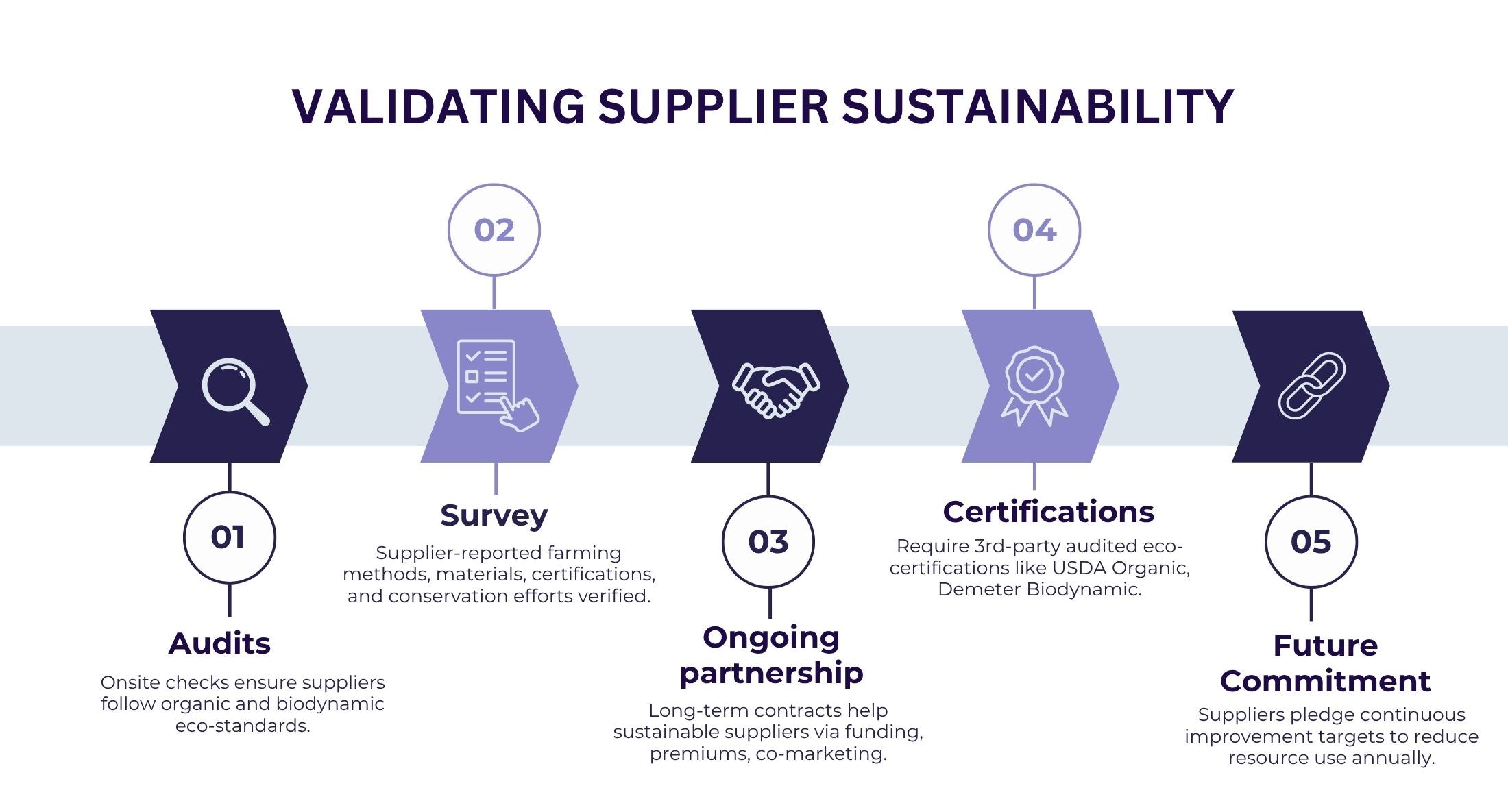
Social Responsibility & Ethical Production
As eco-conscious values gain mainstream traction, consumers increasingly demand that products align not just with environmental sustainability, but also ethical business practices. Within the wine industry, this rising expectation for social responsibility encompasses how wineries treat employees, engage with local communities, and conduct business across their supply chains.
Leading sustainable producers recognise that caring for the land and people are intertwined endeavours, that together determine terroir. By implementing ethical policies and practices, wineries also future-proof their operations to attract top talent and loyalty from values-driven consumers.
Key aspects of social responsibility gaining importance in the wine world include:
Fair Labour Practices
Sustainable wineries prioritise fair and ethical treatment of workers with policies like:
- Living wages, healthcare benefits, and paid time off
- Safe working conditions and accident prevention
- Worker housing meeting quality standards
- Training programmes and opportunities for advancement
- Commitments against discrimination, harassment, or abuse
California's sustainable winegrowing programme, for example, devotes an entire chapter to human resources and required annual self-assessments on fair labour practices. Other third-party standards, like SIP Certified, also audit and score wineries on social equity issues.
Proactively ensuring dignified, equitable work environments allows sustainable producers to retain loyal employees and project an ethical image.
Community Engagement & Inclusion
Beyond the vineyard, leading wineries also pursue sustainability through local community engagement and promoting diversity/inclusiveness.
Specific initiatives include:
- Hosting educational events and tours for residents
- Volunteering expertise to train future wine industry professionals
- Participating in and donating to charitable causes
- Ensuring tasting rooms are wheelchair accessible
- Sponsoring cultural programmes and scholarships to foster inclusion
Napa Valley Vintners' community investment arm, for instance, has donated over $200 million to date. Such outreach aims to sustain healthy, resilient communities and opportunities for all residents.
Supply Chain Ethics
Increasingly, consumers demand not just winemaking practices, but entire supply chains to reflect ethical values.
This means sourcing from vendors who demonstrate:
- Fair labour conditions
- Environmentally responsible production
- Efforts to reduce packaging and food waste
- So responsibly produced wine and food offerings in tasting rooms
Wineries set an example of circularity in their business ecosystems by controlling waste and selecting suppliers according to sustainability standards.
Industry Leadership
Beyond individual actions, the most progressive wineries also lead efforts to make sustainability accessible for smaller producers industry-wide.
Examples include:
- Openly sharing technical knowledge on renewable energy, regenerative farming, etc.
- Creating and funding regional sustainability programmes for wider adoption
- Educating consumers and trade partners on eco-conscious wine trends
- Participating in policy discussions on incentives for sustainable agriculture
Through such collaborative leadership, forward-thinking wineries accelerate the entire wine sector's sustainability transition.
Market Outlook & Developments
The wine industry is undergoing a sustainability revolution driven by shifting consumer preferences, climate change impacts, and innovation by producers seeking to future-proof their businesses. 2024 is poised to accelerate the adoption of eco-friendly practices across the global wine sector.
Growth Trends and Forecasts
Market research confirms a strong expansion ahead for wines made using ethical, eco-conscious methods. Technavio predicts the global organic wine market alone will grow by 8.7 billion between 2022-2027, increasing at a 9% CAGR as health and environmental awareness spread globally. Sustainable wine certifications are also proliferating rapidly as consumers increasingly seek trustworthy eco-labels to guide their purchases. For example, over 10% of California's
vineyards are now certified sustainable by programmes like Napa Green and Sustainability in Practice. With stringent standards and third-party auditing, these certifications incentivise wider adoption of conservation techniques like solar power, water efficiency, waste reduction, and regenerative agriculture.
Consumer willingness to pay price premiums for demonstrably sustainable wines encourages producer participation in eco-certifications. For instance, around 70% of US wine drinkers say they would pay $3 more per bottle for wines made using ethical, environmentally friendly methods, according to Wine Intelligence surveys. As young, sustainability-minded consumers gain spending power, their thirst for green wines will further expand the category's growth trajectory.
New Regions Gaining Recognition
While historical wine regions like France, Italy, and California boast incredible cultural legacies, many exciting sustainability developments are occurring in emerging wine destinations. Conscious wine lovers should explore these rising regions where small, artisanal producers are fully embracing the future of sustainable viticulture.
For example, Chile has become a global leader in renewable energy adoption and carbon neutral certification within the wine sector. Its dry climate lends itself well to organic farming, too. Over 15% of Chile's vineyards are now certified organic, with producers like Emiliana Vineyards leading the charge.
Wine growers in South Africa are also elevating sustainability efforts. By 2025, the non-profit organisation WIETA aims to have all South African wines verified as produced according to fair labour and ethical practices. And the newly formed Renaissance Terroirs group has committed to achieving 100% regenerative agriculture across its member wineries by 2030 to combat climate change impacts and preserve precious Cape terroir.
Even newer entrants like Uruguay, Hungary, India, and the Canadian wine regions of Ontario and British Columbia are attracting attention for their sustainable credentials and exciting wine styles. Forward-thinking wine lovers should sample these rising destinations.
Innovations in Sustainable Packaging & Distribution
Eco-innovation is also revolutionising wine packaging and transportation methods. As younger consumers especially scrutinise products' environmental impacts, sustainable packaging and distribution will become baseline expectations.
On the packaging front, lightweight glass, cans, Tetra Paks, and bag-in-box formats are gaining adoption as producers respond to consumer and regulatory pressure to cut waste. For example, Bonterra recently released several wines in 100% recycled Tetra Paks resulting in a 75% carbon footprint reduction versus glass bottles.
To slash transportation emissions, leading wineries are regionalising distribution, optimising logistics networks, and purchasing carbon offsets. By tracking and reporting emissions across the supply chain via lifecycle assessments, wine companies can also identify efficiencies, reduce their climate impact, and boost brand appeal to eco-conscious consumers.
E-Commerce & DTC Sales
While online wine sales surged during pandemic lockdowns, the e-commerce trend shows no signs of abating even as tasting rooms reopen. In 2022, direct-to-consumer (DTC) shipments accounted for 13% of US wine sales, rising 12% over 2021.
The convenience and unique selection offered by DTC purchasing resonate widely with younger consumers. Specialist online wine clubs and apps are proliferating too. Vivino, for example, leverages over 200 million user wine reviews to provide personalised recommendations and help wine lovers discover exciting new sustainable producers.
Small wineries can now reach niche markets worldwide like never before by combining digital sales channels with compelling sustainable narratives. The future remains bright for eco-conscious wine producers embracing e-commerce and DTC sales.
Conclusion
Sustainability has cemented itself as an integral consideration across every aspect of the modern wine world. As climate change threatens vineyards globally and consumer awareness of agriculture's environmental impacts increases, the wine industry is actively transitioning towards more eco-friendly production methods.
The overview of practices we've explored that leading producers have implemented - from regenerative viticulture to renewable energy adoption to ethical business policies - showcase demonstrable progress towards mitigating wine's climate impacts. Consumer research also reveals strong demand for green wines, with preferences increasingly shaped by environmental and social values. Surveys show over 70% of wine drinkers are willing to pay more for sustainably made bottles. This market pull will further accelerate the industry's sustainability transition.
Visionary estates are illuminating the path forward through innovation. Whether by achieving ambitious carbon neutrality targets, experimenting with circular packaging alternatives to glass, or transparently sharing technical knowledge with smaller producers, these pioneers are driving the scale-up of eco-conscious practices industry-wide. Their success stories prove environmental stewardship and quality can intertwine to shape the future of fine wine.
Meanwhile, mindful consumers play a crucial role in purchasing decisions that reflect ethical priorities. Seeking out and supporting organically farmed wines, biodynamic producers, certified sustainable brands, and regenerative viticulture champions enables the growth of green wine. Promoting sustainability also means buying local and minimising transport emissions throughout the supply chain.
The Wine Caverns, as a leading online retailer, is ideally positioned to guide consumers towards eco-friendly selections and raise awareness about the benefits of sustainable wine. Featuring green producers and their compelling sustainability initiatives will attract climate-conscious wine lovers. The collective impact of individual actions - by innovative estates, retailers like The Wine Caverns, and environmentally minded drinkers - can transform wine's trajectory towards a more sustainable, ethical, and climate-friendly future.



















